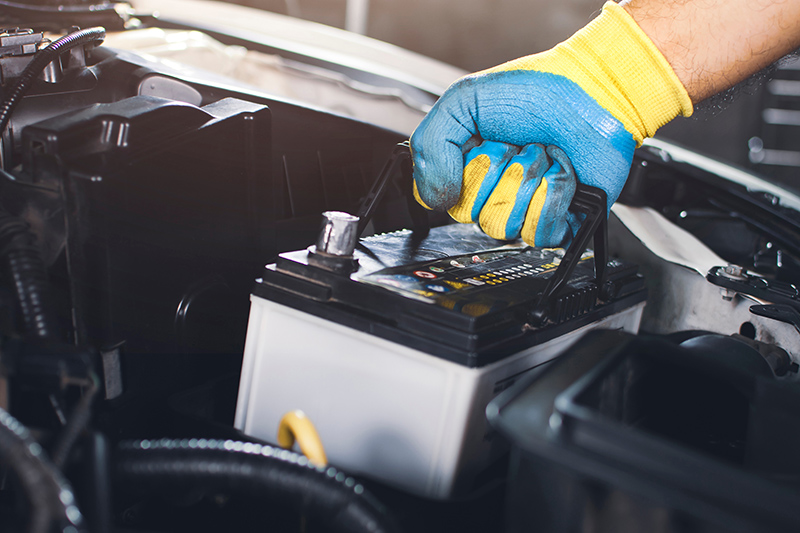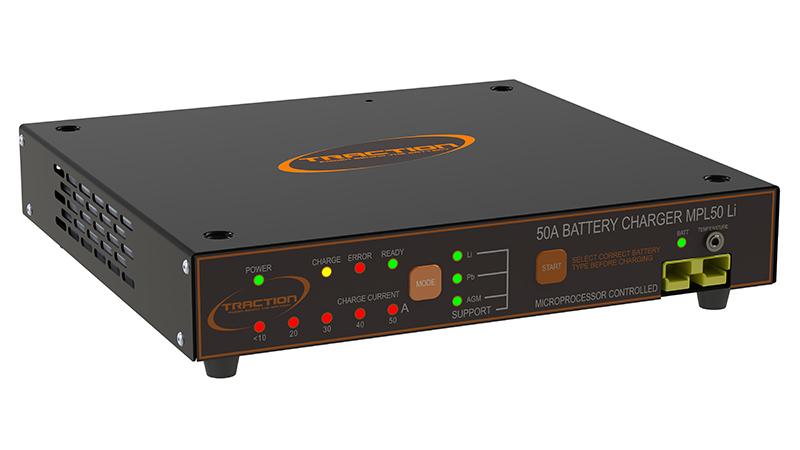
Traction Charger outlines the key differences between the similarly named Lithium Ion and Lithium Iron batteries.
Despite having similar names these are actually two different types of battery, used for different purposes and with distinct characteristics. Perhaps confusingly, both are used in automotive cars, but there are big differences in how they are used and how they perform.
Ultimately these are both battery types, so they do operate on a similar principle in that ions are passed between positive and negative electrodes to discharge and charge. They are also both rechargeable, and also both use a graphite carbon electrode with a metallic backing as the anode.
Lithium-iron (LFP) and Lithium-ion (LCO) technology are both relatively new, the first lithium-ion battery was released in 1991 and is now used in portable electronic devices such as electronic toys, wireless headphones and mobile phones. The lithium iron phosphate battery (or LiFePO4 battery) was developed in 1996 using very similar chemistry. It wasn’t commercialised quickly due to a low electrical conductivity, but this was later improved, making it a player in the 2000s.
Differences
LCO batteries have the chemical symbol LiCoO2 and LFP batteries LiFePO4, so we can see that the immediate difference is that one contains potassium and the other contains cobalt. It is these core elements that are the main active material in these two battery types and give them their distinctive differences.

LCO technology has a relatively short life span, with low thermal stability and limited load capabilities. It requires a slow charge and has a shorter life span. Crucially though, they also have a high energy density and no memory effect, and can deliver power over a long period, which offers a great option for smaller electronic devices that needs recharging.
Lithium-iron batteries (LFP) are in general less powerful than a lithium-ion battery. They have a much longer life span – LCO cycle durability is between 400 and 1200 and last around 13-18 years, whereas LFP is more like 2000 cycles so in theory should last more like 50 years.
LiCoO2 is considered hazardous (it can cause allergic reactions to the eyes and skin when exposed), whereas LiFePO4 is a nontoxic material and can be disposed of more easily. Lithium iron phosphate has generally excellent thermal and chemical stability, staying cooler in higher temperatures and at low risk of combustion, whereas LCO batteries have a higher flammability rate.
Automotive applications?
LFP technology (lithium-ion) is the primary choice of battery for an electric car, so you’ll see this technology specifically in Teslas and most hybrids. They need to be plugged in in order to recharge.
Lithium-iron batteries however, are being used more often to replace conventional lead-acid batteries in gas/petrol-powered motor vehicles. This technology is significantly more expensive than regular car batteries but with its longevity and charging benefits it’s quickly becoming the choice of battery for car manufacturers, so is now often found in newer cars.
Charging
Traction Chargers produce battery charging technology specifically for Lithium-iron batteries – The MPL50-Li and SPIC-50. These batteries require a specific charger and can be fatally damaged if a non-LiFePO4 charger is used.
Both the MPL50-Li and SPIC-50 can also be used for all other common battery types (Ca/Ca, Ca/Ag, AGM, GEL and conventional lead acid) so it’s a worthwhile investment for future-facing workshops and mechanics.









